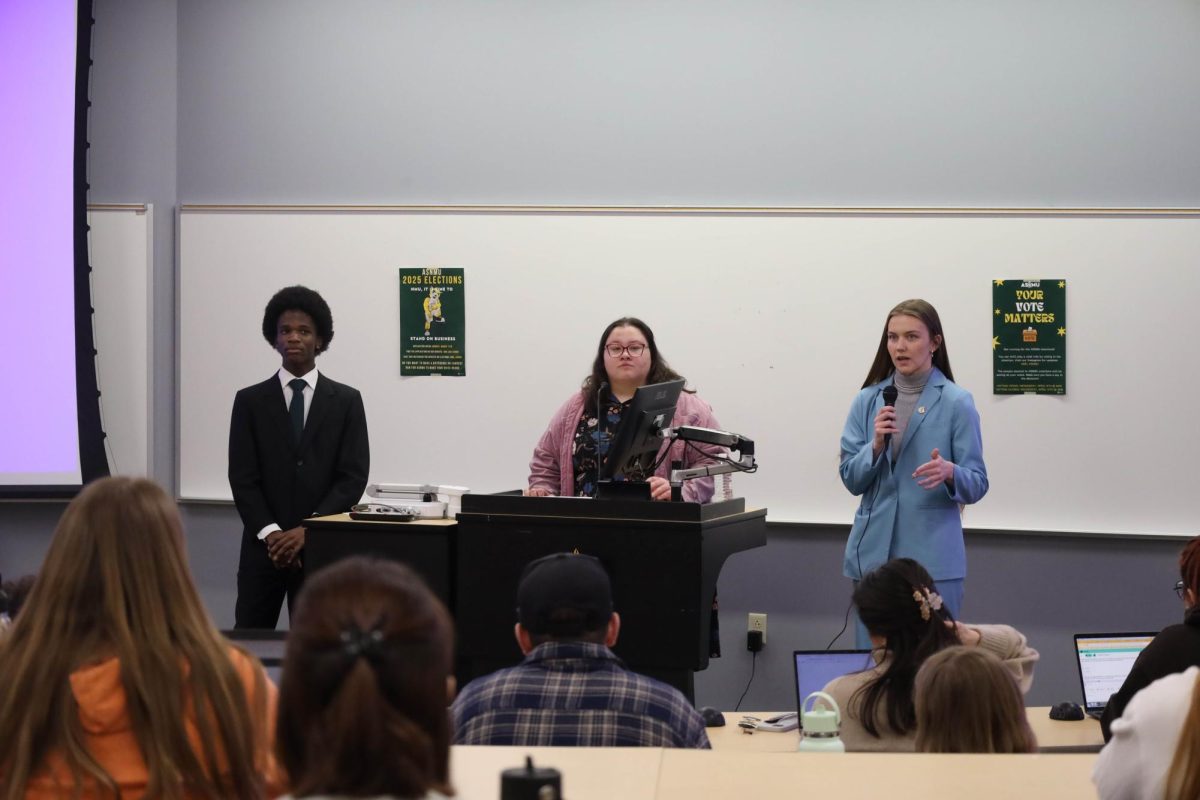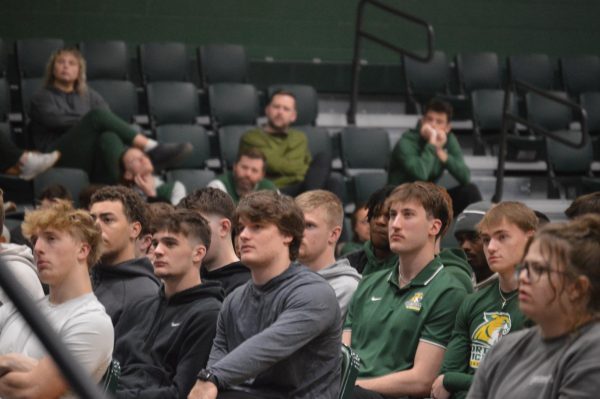On Tuesday, NMU organization Women for Women held an Equal Pay Bake Sale in Jamrich. The purpose of the event was to raise awareness of the so-called “wage gap,” or the idea that women earn roughly $0.77 for every $1.00 that men earn.
While I always applaud enthusiastic activism, there are serious issues with the ideas the group promulgated.
The notion that women earn $0.77 on the dollar for the same work as men is patently false. The Foundation for Economic Education points out that this figure is just a simple wage comparison between full-time male and female workers. It does not take into account things like different jobs, education, skills, hours worked or preferences of workers. These are all significant variables when determining pay.
When we examine these variables, what do we find? Well, on average, men tend to gravitate toward higher income degrees. According to Georgetown University, of the top 10 highest-paying college majors, men dominate in nine of the fields. Comparatively, women dominate in all but one field of the lowest-paying college majors. This is not because of discrimination against women in the higher-paying fields; according to Cornell University, women actually have a 2-to-1 hiring advantage in STEM fields over men with the same education and experience. The discrepancy is due to individual choices.
Additionally, men are overrepresented in occupations categorized as stressful, dangerous or undesirable, according to CBS News. These jobs include construction, mining and oil drilling. All these occupations tend to pay higher than average wages. Because men fill these jobs, they also represent 93 percent of workplace casualties.
Equally important, according to Bureau of Labor statistics, men tend to work more hours than women on average. This includes both part-time and full-time work, as well as overtime. They also are less likely to take time off and more likely to accept jobs that require them to be on-call.
Many middle-aged women also take time off to have children, which stagnates their wage growth. This is perhaps one of the most contributive factors to lower wages. In fact, data shows that women tend to make not less, but more than their male counterparts before they have kids. According to the Census Bureau, childless women age 22 to 30 earn more than childless men on average. In some cities, such as Atlanta, they make as much as 121 percent more. Women age 25-34 also have higher rates of bachelor degree attainment.
So, with all this in mind, has anyone conducted studies that account for these variables? As it turns out, the American Association of University Women, the feminist organization that our campus group Women for Women cited to show a wage gap, conducted such a study in 2012. According to their own research, the gap shrunk from $0.23 cents to under a mere $0.07 cents. This correlates with a 2009 study from the Department of Labor, which estimated a little under $0.05 to $0.07 discrepancy. This is still a gap, but not nearly as large as some would have you believing.
There are a variety of explanations to account for the remainder of the gap, and they all probably play some part of it. Certainly, discrimination against women in the workplace isn’t extinct, and it probably accounts for an amount. However, if someone is discriminated against, they ought to report it. Gender discrimination in the workplace became illegal under the Equal Pay Act of 1963.
Whatever the case may be, we do know one thing for certain: women earning $0.77 on the dollar is a myth.


























Anonymous • Apr 20, 2018 at 1:33 am
Lol of course a man wrote this.
Rich Rossway • Apr 19, 2018 at 10:45 am
I appreciated reading your article Riley, plus the research you did. I’m pretty certain you don’t think this is a simple issue, it certainly must have been challenging to condense it to a few paragraphs. It’s easy for someone to take shots at you because you didn’t make every point possible, but given the limited size of the article, I commend you. Understanding you are a young college student, I thank you for the effort in bringing this issue a bit of perspective and creating dialogue.
Andrew Lorinser • Apr 18, 2018 at 5:08 pm
*wage gap
Andrew Lorinser • Apr 18, 2018 at 5:07 pm
The age gap isn’t that women get paid 20% less for the same work, it represents the distribution of jobs. You address this, sort of, Mr. Riley, but in an obtuse way. It’s a myth if you define it the way you did, but no economists would. Wage gap refers to the cultural desimination of jobs per gender. Solutions: paid maternity leave and encouraging young women to equally pursue STEM opportunities. I’m afraid you missed the point, completely. Wage gap is not a myth. goo.gl/hLupbq
Anonymous • Apr 18, 2018 at 2:23 pm
Have you heard of the feminization of poverty? This article is tough to read, pretty one-sided, and doesn’t take into account a lot of social factors that may lead women to “choose” lower paying wages. Take some social work classes or go talk to women who have first hand experience with gender-based crimes than men–domestic violence or sexual assault, for example. This may lead you to have a better grasp on the issue. It’s more than just “women don’t wanna do the dirty work” or that they want to stay home with the kids.
This may lead you to have a better grasp on the issue. It’s more than just “women don’t wanna do the dirty work” or that they want to stay home with the kids.